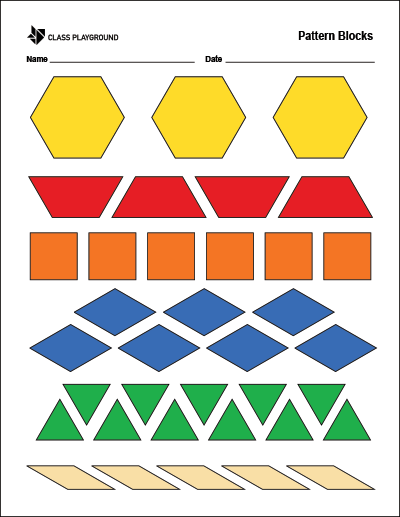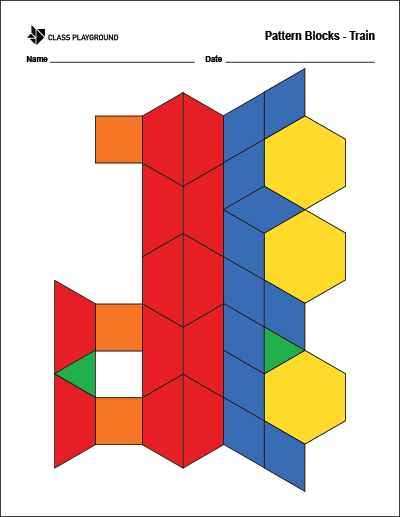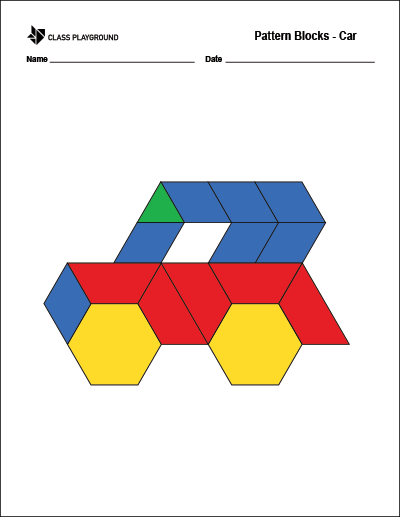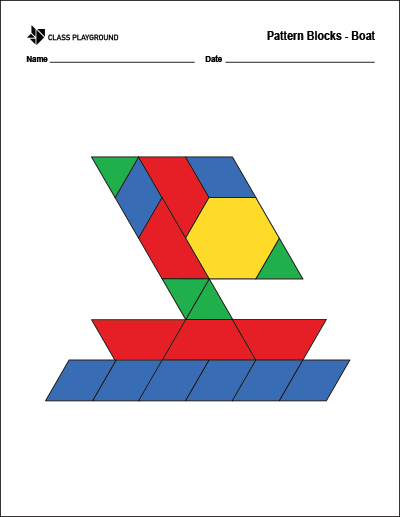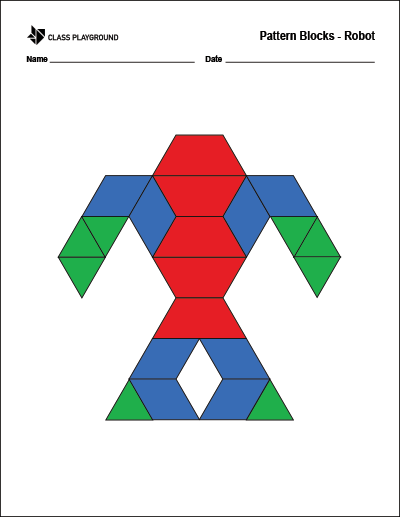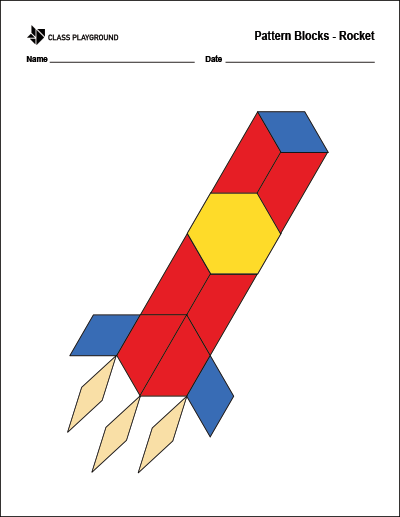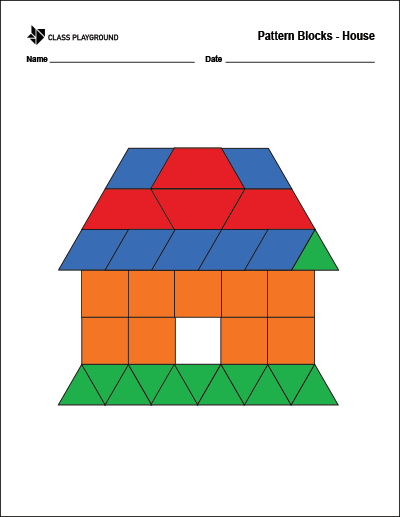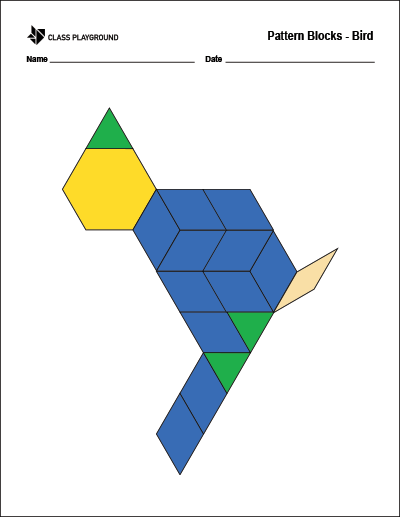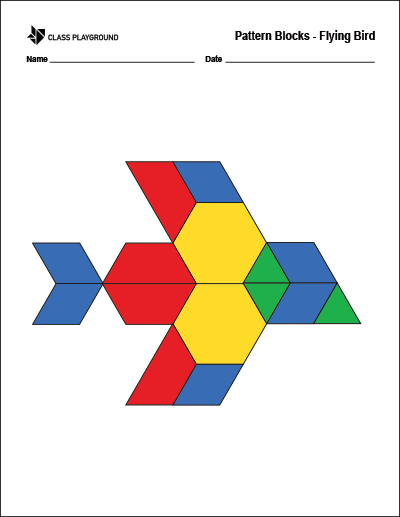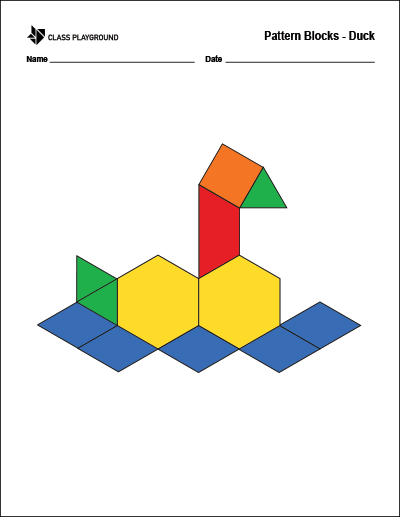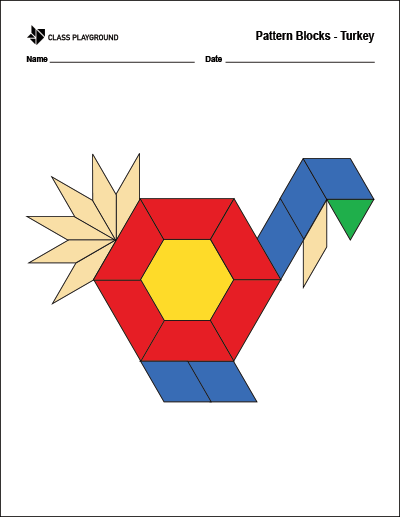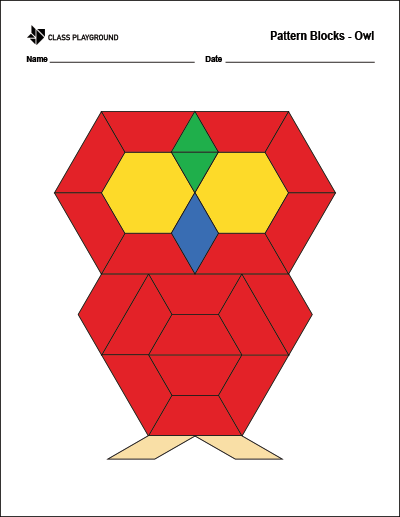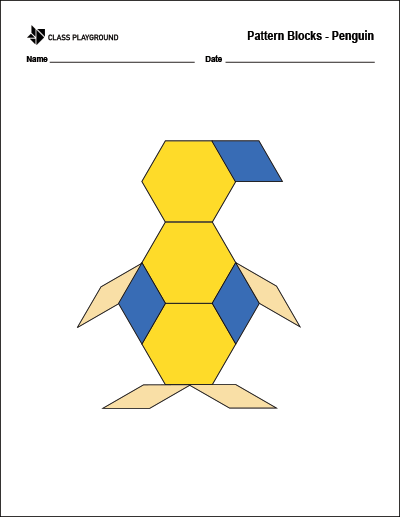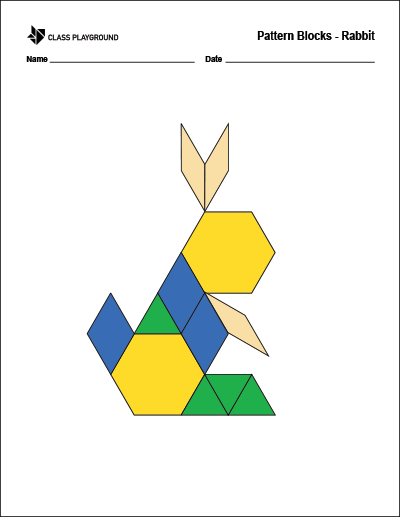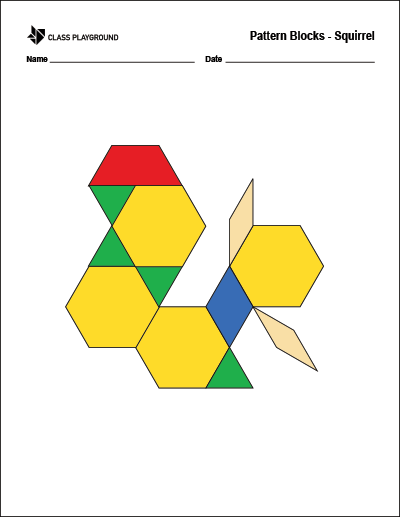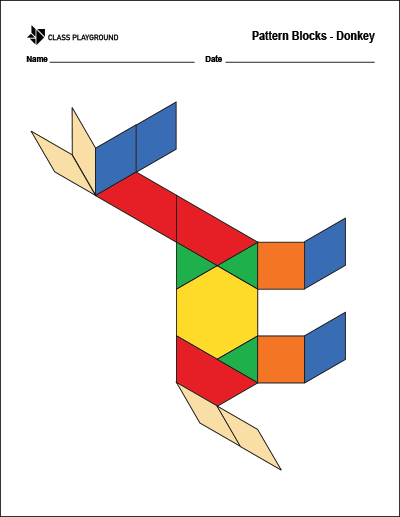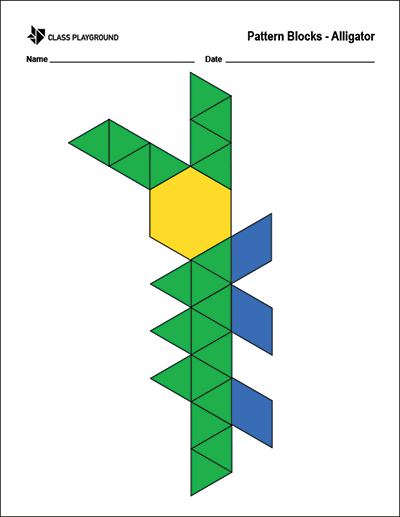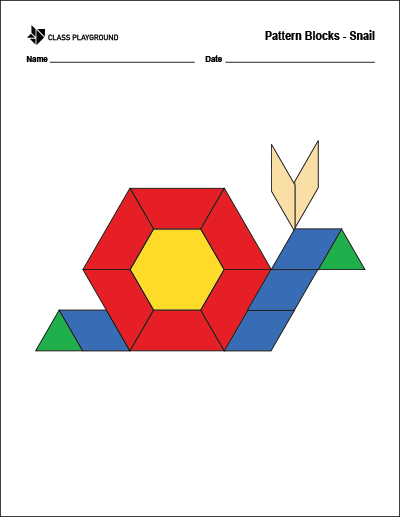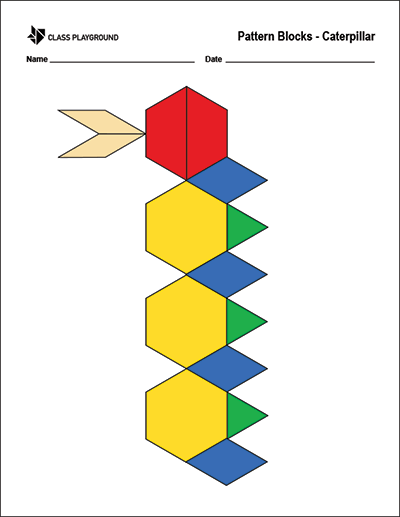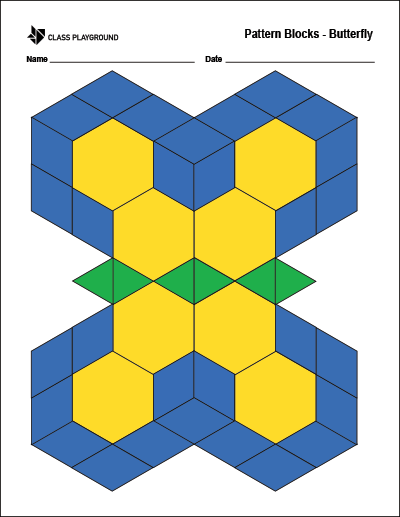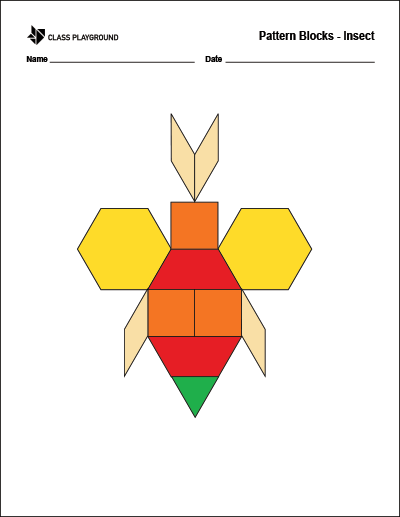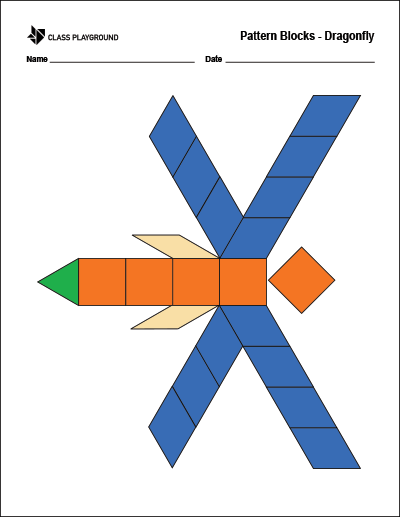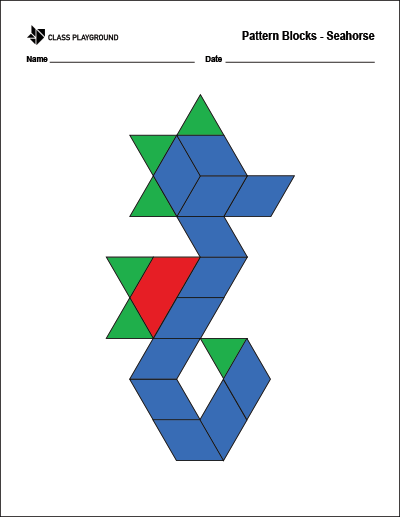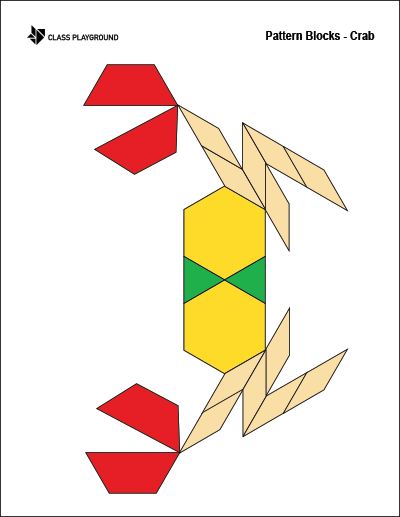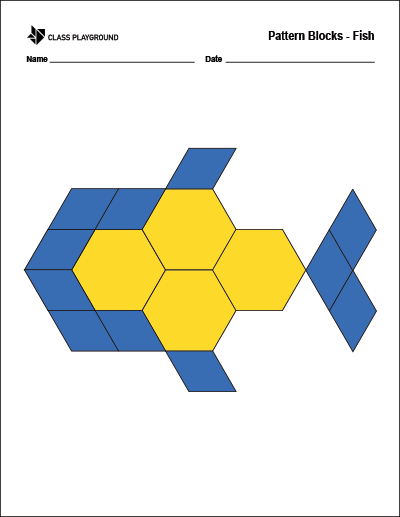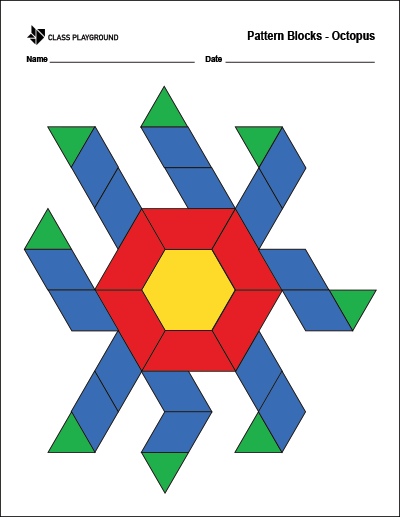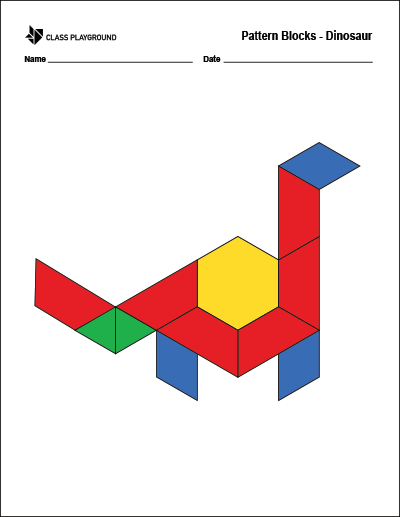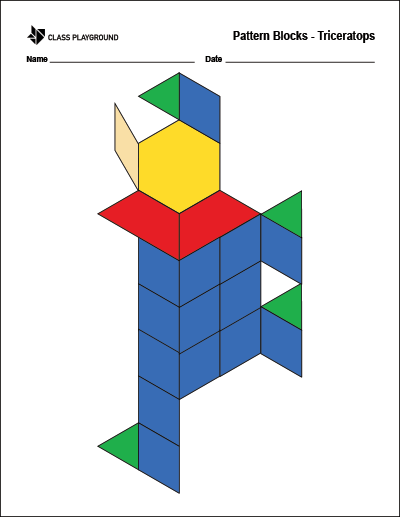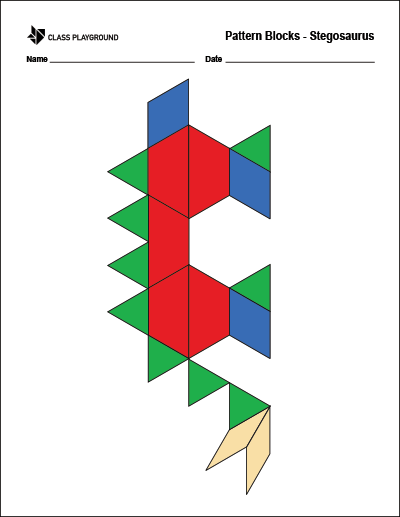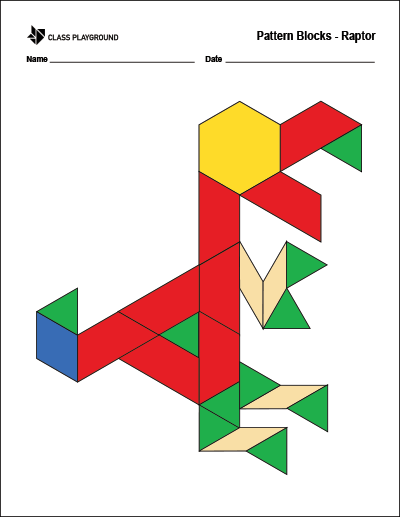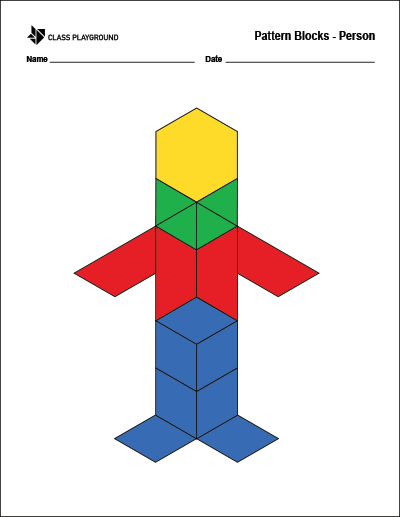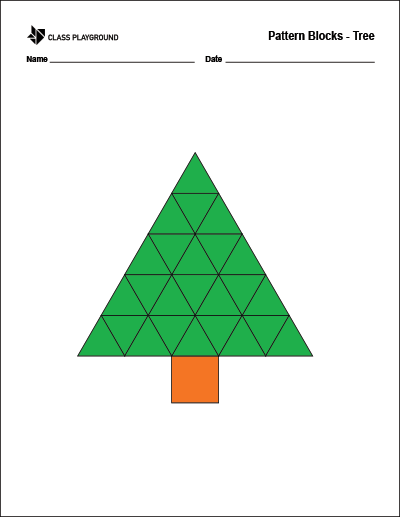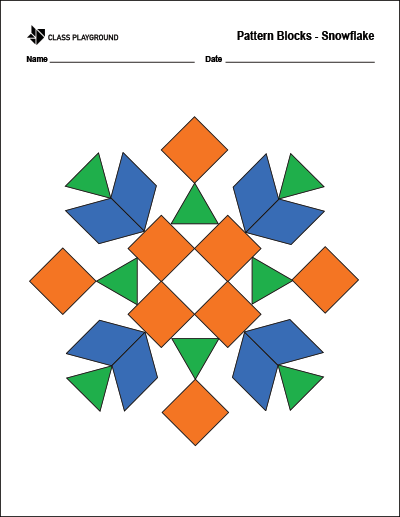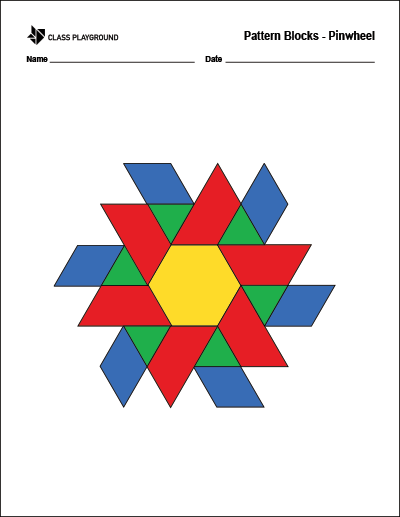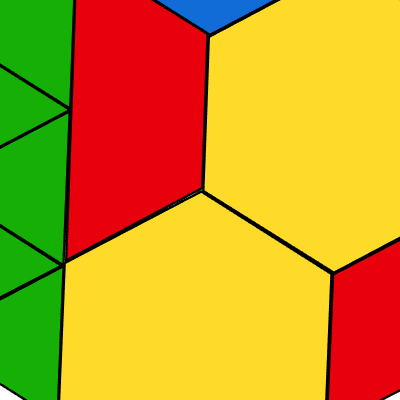What Are Pattern Blocks?
Pattern blocks are a popular manipulative found in most elementary classrooms. In simple terms, they are colored geometric shapes typically made of wood or plastic. You might even remember working with them as a child. Perhaps you made a pretty, symmetrical flower with a hexagonal yellow center. Or maybe you created an animal using the colorful blocks.
Pattern blocks were developed in the 1960s by the Education Development Center. A set of pattern blocks typically consists of six different shapes in six different colors. The traditional colors and shapes are a yellow hexagon, red trapezoid, green equilateral triangle, blue rhombus, orange square, and thin beige rhombus. Except for the trapezoid, the lengths of all sides of each shape are the same. That makes it easy for students to fit the pieces together when creating pictures and designs.
Skills Students Learn from Pattern Blocks
Pattern blocks are fun, and engaging manipulatives that can be used to teach concepts in math, geometry, art, and even language arts. Plus, working with pattern blocks can help children build fine motor skills. How do pattern blocks achieve all this?
Pattern blocks encourage creativity, and kids are naturally drawn toward them. If you leave a bucket of pattern blocks on the floor without direction, children will quickly start exploring with them. Soon, the floor will be covered with designs, patterns, and pictures they’ve created.
For topics in math, pattern blocks offer a hands-on way to explore numerous topics. In kindergarten, first, and second grades, the colorful blocks can be used to count, sort, and make patterns. Plus, students can learn about shapes, symmetry, and area. In the upper elementary grades, pattern blocks can be used to learn about fractions, angles, and geometry.
As students work with pattern blocks, they also build their vocabularies. Students can learn the correct name of each shape and also describe the pictures and designs they create with pattern blocks.
Finally, working with pattern blocks also helps students develop spatial awareness and build fine motor skills. The pattern blocks can be rotated and flipped, achieving variations of the shape. If students are copying a pattern or picture, they need to pay close attention to the position of each shape. This helps students build spatial awareness and sharpen their visual discrimination skills.
Pattern blocks are small and light. When children use them to create patterns and pictures, one wrong move can mess up the whole design. That means children have to focus on their fine motor movements and hand-eye coordination to achieve the desired outcome.
How to Use Pattern Blocks in the Classroom
Aside from simply allowing students to tinker with pattern blocks, there are many pattern block activities that focus on building specific skills. Using pattern blocks during lessons can help build interest and motivate students as they learn new concepts. Here are a few activities to try:
-
Building a Pattern
Make teaching patterns fun and engaging with pattern blocks! There are many ways to approach this. One activity is for students to continue a pattern that’s already been started. For example, you might lay out a green triangle, an orange square, and a green triangle. Then, students have to finish the pattern. Or, students can invent their own patterns after you’ve introduced the concept. Then, challenge students to create and label patterns using pattern structures such as ABABA or ABBA, ABC, etc. While working with patterns, students practice recognizing patterns, making predictions, and improving their observation skills.
-
Recreate the Shape!
Similar to Tangrams, you can challenge students to recreate shapes, pictures, or silhouettes with pattern blocks. When children need to recreate a shape, they need to focus carefully on the shapes and how they fit together to make the picture or design. This boosts visual discrimination skills, critical thinking, and creativity.
-
Pattern Blocks Templates and Pattern Block Printables
Turn your pattern blocks into a math center by providing students with pattern block templates. Templates offer a design that students can copy using the pattern blocks. You can even use pattern block printables to create pattern block mats upon which students can place pattern blocks. Are you looking for an easy solution? We have collected our pattern block printables into a book, available from Amazon.
-
Pattern Blocks Online
If you don’t have access to pattern blocks or you’d rather not deal with the realities of managing many small blocks, online pattern blocks are a great solution. Online pattern blocks can offer benefits that are similar to working with pattern blocks. Children can create patterns, copy pictures, model math problems, and more. Our online pattern blocks are designed to mimic real pattern blocks. They can be rotated and even bump into the other blocks. The best part? There’s no cleanup. Give them a try, they’re free!
-
Symmetry with Pattern Blocks
Pattern blocks can be used to demonstrate symmetry. You can introduce students to both reflection and rotational symmetry in a fun, engaging way using pattern blocks. Here are a few ideas on how you can teach symmetry with pattern blocks:
- Use pattern blocks with a mirror. Students can create a design next to a standing mirror and see the identical pattern reflected in the mirror.
- Once children understand reflection symmetry, invite them to try to create designs that feature symmetry.
- Explore rotational symmetry with students by creating snowflakes or mandala designs with pattern blocks.
-
Studying Fractions with Pattern Blocks
Pattern blocks can help students explore relationships between shapes. When working with them, children notice how the pieces fit together like a puzzle and how their sizes are fractionally related to each other. For example, three green triangles can cover one red trapezoid. That shows that each triangle is one-third the size of the trapezoid. Similarly, two red trapezoids cover a yellow hexagon perfectly, showing that the red trapezoid is one-half the size of the hexagon.
Turn fraction study into a game with pattern blocks! One idea is to challenge students to represent fractions such as 1/3 or 1/6 using pattern blocks. Or, have students use pattern blocks to model addition or subtraction with fractions.
-
Tesselations
Picture a beautiful mosaic. This type of art or tiling often features tesselations. What are tesselations? Tesselations are designs of repeated geometric shapes with no space between the shapes. Children can use pattern blocks to make many tesselation designs. You might consider showing children a variety of different tesselations or mosaics and encouraging them to create their own. You might even have children trace pattern blocks on paper. Then, they can color their tesselation with crayons. Working with tesselations can help children explore more complex patterns and also unleash their creative side.
-
Exploring Perimeter and Area with Pattern Blocks
Using just one shape from the pattern blocks such as the square or parallelogram can help students explore the concepts of area and perimeter. Each side of the square can represent one unit. You can ask children to solve for perimeter or area after creating different designs using just one shape of the pattern blocks.
-
Working with Angles
Some of the pattern blocks such as the blue parallelograms and beige rhombus can help teach students about angles. For example, when students learn that 360 degrees make a circle, they can determine the measurement of angles in the blue parallelograms (60 degrees) or the orange squares (90 degrees). They can solve the problem by creating a circle with the shapes and then dividing 360 by the number of shapes needed to create the circle.
Pattern Blocks: A Fun, Engaging Learning Tool
Adding pattern blocks to lessons in your classroom can boost engagement and help students understand complex concepts. Research shows that using manipulatives can help improve student learning and make lessons more enjoyable. That makes pattern blocks a win for both teachers and students. Which activity will you try first?
Pattern Blocks Book: Designs





This is a unique book filled with pattern block designs, a perfect addition to any classroom. Pattern Blocks stimulate creativity and develop spatial and logical skills. They are more than just patterns; they are the building blocks for nurturing young minds. Make it a part of your classroom library today!

